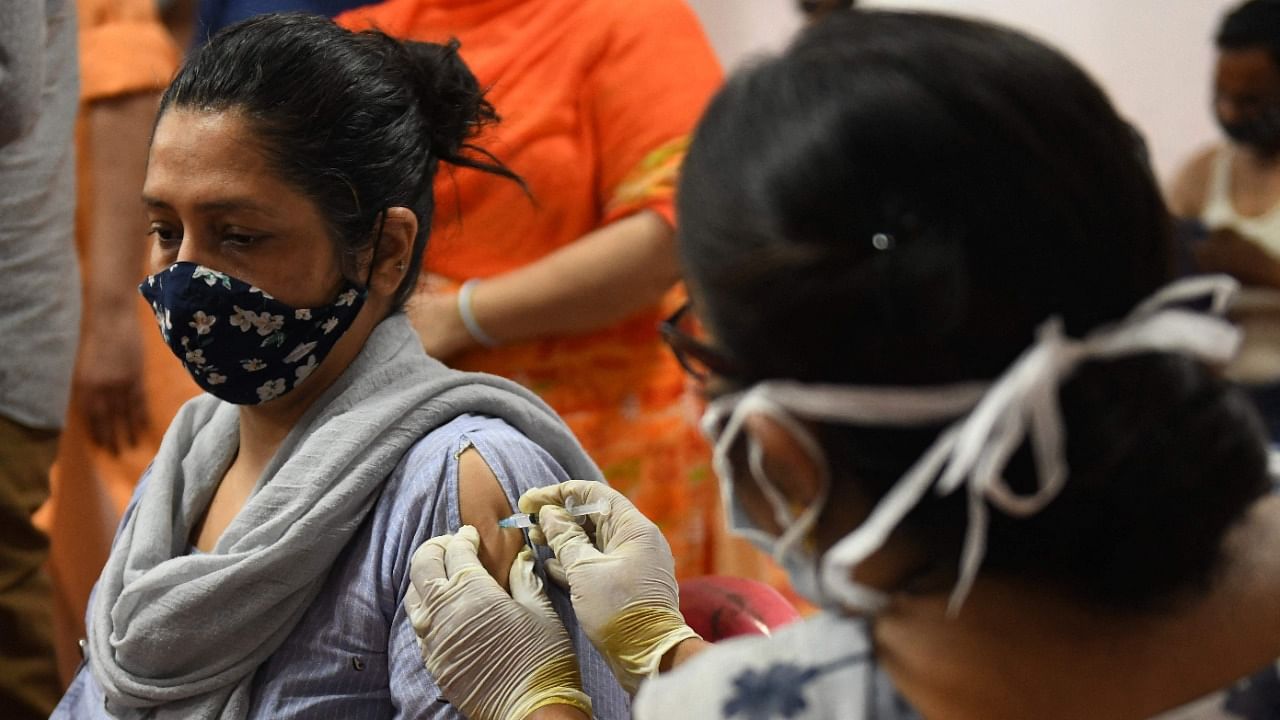
Scientists have calculated that Karnataka has to nearly double the Covid-19 vaccination rates to effectively cut down the state’s caseload by a third. The findings have implications for mitigating a future surge in cases, including the third wave.
The calculations were made using a recently-developed model by a team of scientists from the Indian Institute of Science (IISc), the Indian Statistical Institute (ISI) and the University of Virginia, which IISc said “evaluates the vaccination requirement and proposes three different roll-out plans, based on population size, seroprevalence and number of cases, including active or recently recovered infections in a state or district”.
According to Professor Rajesh Sundaresan of IISc’s Department of Electrical Communication Engineering, the model shows that if Karnataka administered four lakh doses per day, the state’s Covid-19 caseload would reduce by 55% by August 31 -- when coupled with relatively strict non-pharmaceutical interventions such as lockdowns.
Coupled with relaxed restrictions, as is the case now, the model predicts a 37% reduction in caseload by the end of August and with no interventions, a reduction of 13.5%.
Reducing the caseload has been a challenge for Karnataka. Even though the second wave peaked statewide on May 5, the state has not been able to reduce its daily Covid-19 numbers to more manageable levels. In the last 14 days, for example, the state has been reporting a near-unwavering average of 1,600 cases daily.
Further efforts at containment may be prolonged by the fact that the model’s suggested required rate of four lakh doses per day is nearly double of what Karnataka is currently doing.
Since the start of July, the state has been dispensing an average of about 2.5 lakh doses per day. At the same time, the official data shows that week-on-week, the rate of vaccinations in the state declined by 10.4% between June 28 and July 4 and again between June 5 to July 18. In the last seven days, the rate of decline is 4.6% with only 2.2 lakh average doses administered everyday.
A government official, speaking off the record, said that this is due to ongoing shortages of vaccine supplies. “Although the Centre has been apprised of the situation weeks ago, there has been no update from them about increasing dosage deliveries,” the official said.
Professor Sashikumar Ganesan, chairman of IISc’s Department of Computational and Data Sciences (CDS), whose own independent, partial differential equation (PDE)-based model is at the forefront of case number predictions in the country, corroborated that vaccination rates have to increase.
He told DH that only two factors will trigger the rise of the third wave: a slump in vaccinations and a new variant of the novel coronavirus. “We have to have a 50% increase in the vaccination rate to prevent any increase,” he said.